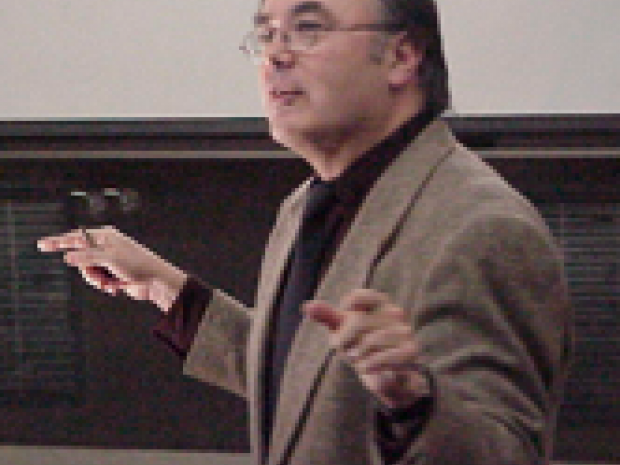
Photonic Atoms (PAs) are the Quantum Analog of Electronic Atoms in which the orbiting electron is replaced by an orbiting photon. They are formed from dielectric Micro-spheroids of small eccentricity, where photons are confined by total internal reflection. This low dissipation mechanism for confinement leads to extremely narrow excitation and emission linewidths for PA states (a.k.a. whispering gallery modes), from which a host of basic physics and applications flow.
Dye molecules within an extended medium normally emit fluorescence in a broad spectrum. However within a medium in which light is dielectrically confined, the emission spectrum is broken up into narrow lines. This is a consequence of the high photon density of states near the frequencies of orbiting resonances. Spontaneous emission rates are modified and the excitation intensity required for lasing is drastically reduced through a Cavity Quantum Electrodynamic effect (CQED). As a result extremely low threshold micro-lasers have been reported. Perhaps the most important recent application results from molecules interacting with the orbiting resonance modes well below the energy required for the formation of a molecular excited state.
Here the molecule acts as a weak perturbation that shifts the frequency of a PA state. This phenomena, has led to the world's most sensitive bio-sensor for unlabelled molecules. With this Photonic Atom Bio-sensor (a.k.a Whispering Gallery Mode Bio-sensor) one can detect specific interactions between antibodies attached to the dielectric surface and antigens that are specifically adsorbed from the surrounding environment. In a similar way DNA can be identified though hybridization studies between single stranded DNA attached to the surface and another strand in the surrounding solution that either attaches (compliment) or is rejected (non-compliment).
The Optical Quantum Analog of an Electronic Molecule, the Photonic Molecule will also be discussed.
The Microparticle Photophysics Laboratory can be found on the web at http://www.mp3l.org/

